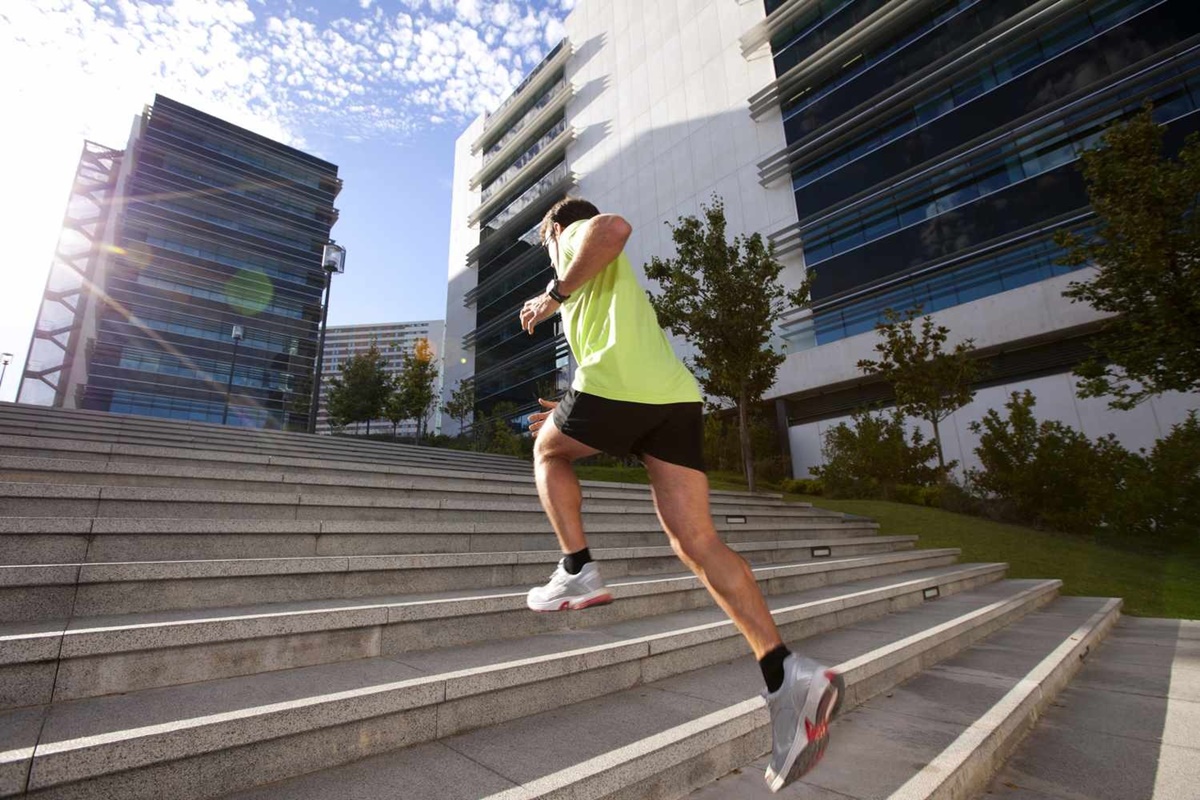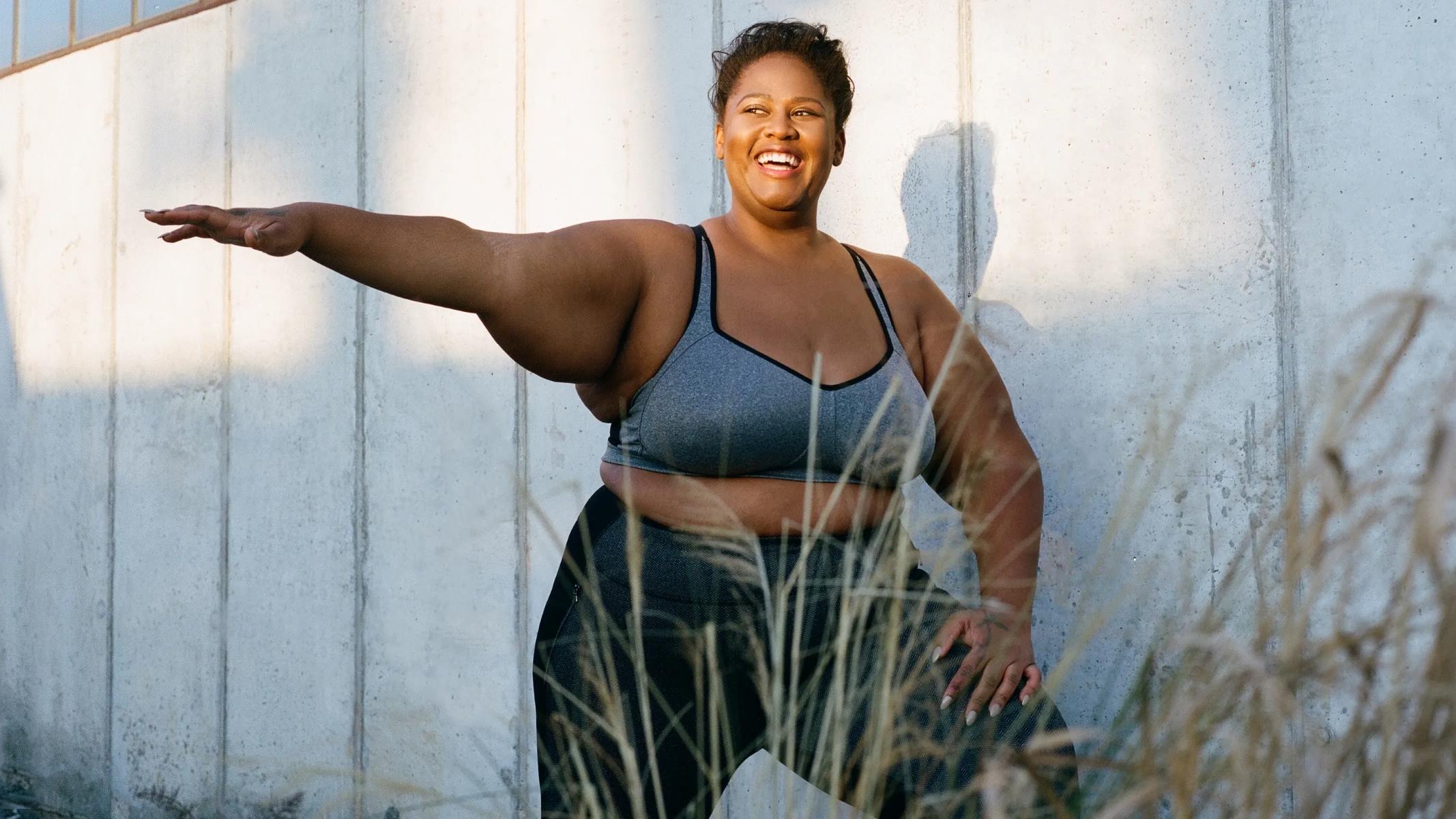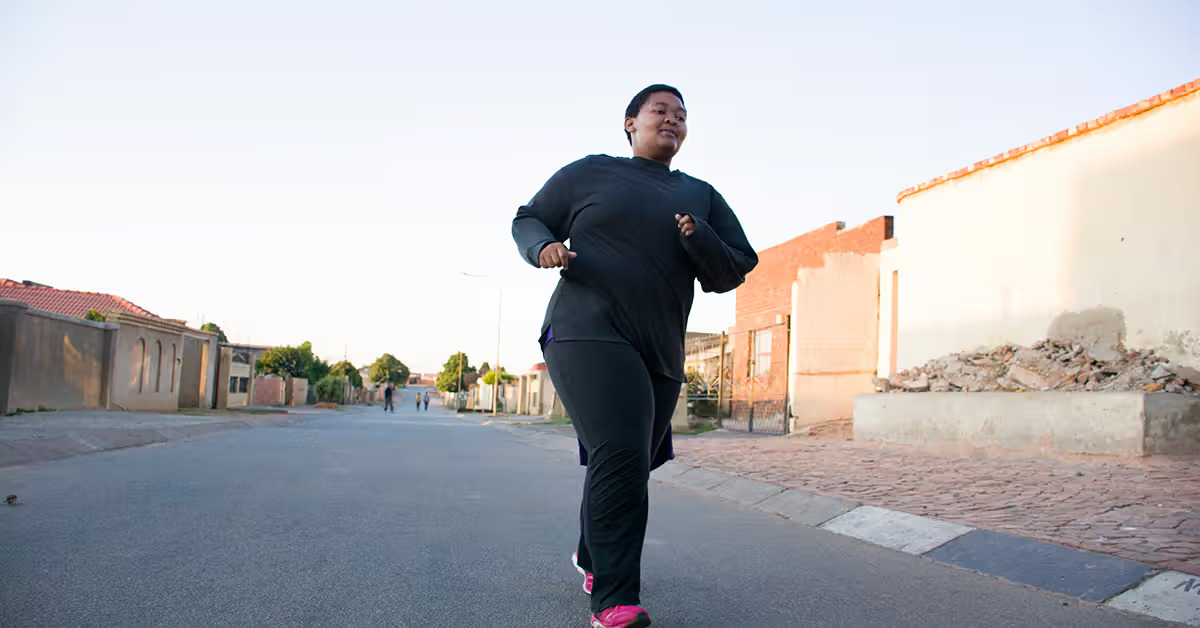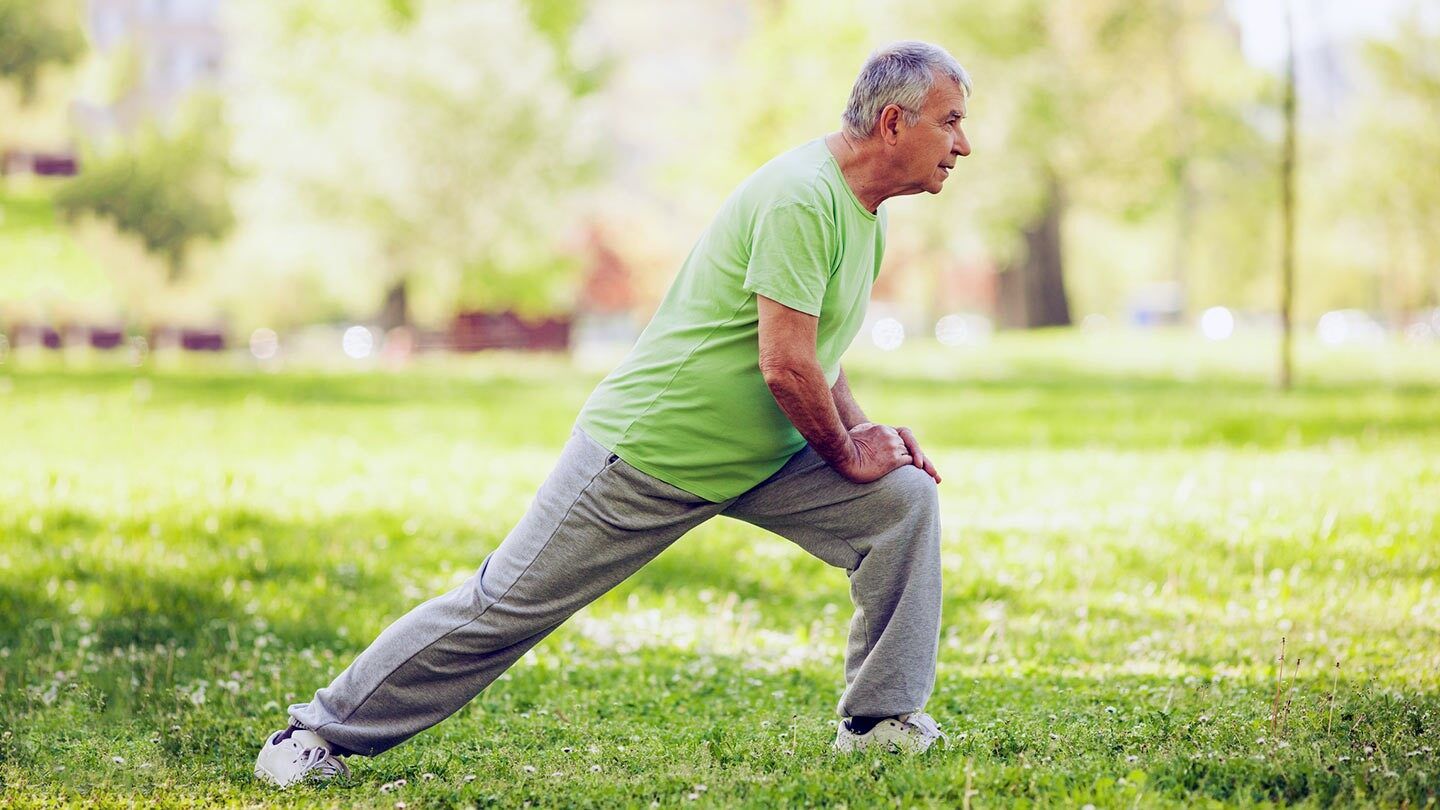

Featured
What Is High Impact Exercise
Published: September 29, 2023
Discover the benefits of high impact exercise with our featured guide. Improve your fitness and increase calorie burn with these intense workouts.
Introduction
High impact exercise has gained popularity in recent years as an effective way to improve fitness and overall health. It involves dynamic movements that exert significant force on the body, leading to increased heart rate and calorie burn. Unlike low impact exercises like walking or cycling, high impact exercises typically include activities such as running, jumping, and plyometric exercises.
High impact exercise offers numerous benefits, including improved cardiovascular endurance, increased bone density, and enhanced muscular strength. It can also be an effective way to lose weight and improve overall body composition. However, it is important to be aware of the potential risks and drawbacks of engaging in high impact exercise, especially for individuals with certain health conditions or injuries.
In this article, we will delve into the details of high impact exercise, exploring its definition, the benefits it offers, as well as the potential drawbacks. We will also provide examples of high impact exercises and offer tips on how to practice them safely. By the end of this article, you will have a comprehensive understanding of high impact exercise, allowing you to make informed decisions about incorporating it into your fitness routine.
Definition of High Impact Exercise
High impact exercise refers to physical activities that involve forceful movements that put stress on the bones and joints. These exercises typically require both feet to leave the ground simultaneously, resulting in a greater amount of shock absorbed by the body upon landing.
High impact exercises are characterized by their intensity and the impact they have on the body. They often involve repetitive movements such as running, jumping, skipping, or bounding. These exercises require a higher level of exertion compared to low impact exercises, making them ideal for individuals looking to challenge themselves and improve their fitness levels.
It’s important to note that the level of impact may vary depending on factors such as body weight, surface, and footwear. For example, activities like running on concrete may have a higher impact compared to running on a soft surface like grass or using a treadmill with cushioning. It is essential to consider one’s individual fitness level and any existing injuries or health conditions when engaging in high impact exercises.
High impact exercises can be categorized into two main types: aerobic and plyometric exercises. Aerobic exercises focus on cardiovascular endurance and include activities like running, dancing, and kickboxing. On the other hand, plyometric exercises focus on explosive movements and include activities like box jumps, burpees, and jumping lunges.
Overall, high impact exercise provides a challenging and intense workout that can help strengthen the body, improve cardiovascular health, and increase calorie expenditure. However, it is essential to approach these exercises with caution and ensure proper form and technique to minimize the risk of injuries.
Benefits of High Impact Exercise
High impact exercise offers a wide range of benefits that contribute to overall health and well-being. Incorporating these activities into your fitness routine can have a positive impact on various aspects of your physical and mental health. Here are some of the key benefits of high impact exercise:
- Cardiovascular Endurance: High impact exercises are excellent for improving cardiovascular endurance. Activities like running, jumping jacks, and burpees increase your heart rate, strengthen your heart muscle, and enhance the overall efficiency of your cardiovascular system.
- Calorie Burn: High impact exercises are known for their ability to burn a significant number of calories. The intensity and dynamic movements involved in these exercises elevate your heart rate and increase metabolic rate, resulting in efficient calorie burning and potential weight loss.
- Bone Density: High impact exercises help promote healthy bones and improve bone density. The force exerted on the bones during activities like jumping and running stimulates the production of new bone tissue, reducing the risk of osteoporosis and strengthening your skeletal structure.
- Muscular Strength and Endurance: Engaging in high impact exercises requires muscle engagement and exertion. As a result, these exercises help develop muscular strength and endurance, particularly in the lower body, including the legs and core.
- Mood Enhancement: High impact exercises have been shown to boost mood and reduce feelings of stress and anxiety. The release of endorphins during physical activity can help alleviate symptoms of depression and improve overall mental well-being.
- Increased Agility and Coordination: The dynamic movements involved in high impact exercises enhance agility, coordination, and proprioception. Regular practice of these exercises can improve balance and body control, making everyday activities easier and reducing the risk of falls and injuries.
These benefits highlight the positive impact that high impact exercise can have on your overall health and fitness. However, it is important to start gradually and listen to your body, especially if you are new to high impact exercises or have any underlying health concerns. Consulting with a healthcare professional or a certified fitness trainer can help you create a safe and effective high impact exercise plan tailored to your specific needs and goals.
Drawbacks of High Impact Exercise
While high impact exercise offers numerous benefits, it is essential to be aware of the potential drawbacks and risks associated with these activities. Here are some of the main drawbacks of high impact exercise:
- Joint Stress and Injury Risk: High impact exercises put significant stress on the joints, especially the knees, ankles, and hips. This increased stress can lead to joint discomfort, wear and tear, and an increased risk of injuries such as sprains, strains, and stress fractures.
- Impact on Existing Injuries: Individuals with pre-existing joint or musculoskeletal conditions, such as arthritis or previous injuries, may find high impact exercises exacerbate their symptoms or hinder the healing process. It is crucial to consult with a healthcare professional before engaging in high impact exercises if you have any underlying conditions.
- Time for Recovery: High impact exercises can be demanding on the body, requiring time for recovery. Failure to allow for adequate rest and recovery can lead to overuse injuries and burnout. It is important to incorporate rest days into your fitness routine and listen to your body’s signals for rest and recovery.
- Not Suitable for Everyone: High impact exercises may not be suitable for everyone, particularly those with certain health conditions or individuals who are overweight or obese. It is essential to seek professional guidance to assess your suitability for high impact exercises and explore alternative options if needed.
- Impact on Joints for Long-Term: Consistently engaging in high impact exercises over an extended period may contribute to degenerative joint conditions. It is crucial to vary your exercise routine and incorporate low impact or non-weight-bearing activities to give your joints a break.
- Difficulty Level: High impact exercises can be physically demanding, making them challenging for individuals who are just starting their fitness journey or have lower fitness levels. It is important to start gradually and build up intensity and duration over time to avoid exhaustion or injury.
Knowing and understanding these drawbacks will help you make informed decisions about incorporating high impact exercises into your fitness routine. It is important to balance the benefits with the potential risks and listen to your body to ensure a safe and enjoyable workout experience.
Examples of High Impact Exercises
There are numerous high impact exercises that you can incorporate into your fitness routine to challenge yourself and reap the benefits. Here are some examples of high impact exercises:
- Running or Jogging: Running or jogging is a classic high impact exercise that engages multiple muscles while increasing heart rate and cardiovascular endurance.
- Jumping Jacks: Jumping jacks are a simple yet effective high impact exercise that involves jumping with your legs spread wide while simultaneously raising your arms overhead.
- Jump Squats: Jump squats combine the benefits of squats and explosive jumps, helping to build lower body strength, power, and agility.
- Box Jumps: Box jumps involve jumping onto a sturdy platform or box and stepping down. They are great for improving explosive power and lower body strength.
- Burpees: Burpees are a full-body exercise that combines a squat, plank, and jump. They target multiple muscle groups, increase heart rate, and improve overall conditioning.
- High Knee Runs: High knee runs involve running in place while lifting your knees as high as possible with each stride, engaging your core and lower body muscles.
- Jumping Lunges: Jumping lunges add a plyometric element to traditional lunges, helping to improve leg strength, balance, and coordination.
- Plyometric Push-Ups: Plyometric push-ups involve explosive push-ups where you push yourself off the ground with enough force to lift your hands off momentarily.
- Jump Rope: Jumping rope is a versatile high impact exercise that offers a cardio workout while improving coordination, footwork, and endurance.
These are just a few examples, but there are numerous other high impact exercises you can explore to add variety and challenge to your workouts. Remember, it is important to start gradually, master proper form and technique, and listen to your body to avoid injury and optimize your performance.
How to Safely Practice High Impact Exercise
While high impact exercise can be a great way to improve fitness and overall health, it’s important to prioritize safety to minimize the risk of injuries. Here are some tips to help you practice high impact exercise safely:
- Start Gradually: If you’re new to high impact exercise or returning after a break, start with lower intensity exercises and gradually increase the intensity and duration over time. This allows your body to adapt and reduce the risk of overuse injuries.
- Warm-up Properly: Prior to engaging in high impact exercises, it’s crucial to warm up your muscles and joints. This can include dynamic stretches, light cardio exercises, and mobility drills to prepare your body for the workout.
- Choose Proper Footwear: Invest in a good pair of supportive athletic shoes that fit well and are designed for high impact activities. The right footwear can provide cushioning, stability, and support, reducing the stress on your joints.
- Pay Attention to Technique: Proper technique is vital for both effectiveness and safety. Focus on maintaining proper form, especially during movements that involve jumping or landing. Engage your core, land softly, and avoid excessive twisting or jerking motions.
- Listen to Your Body: Pay attention to any signs of pain or discomfort during your high impact workouts. It’s important to differentiate between muscle soreness and actual pain. If you experience sharp or persistent pain, stop the exercise and seek professional advice.
- Incorporate Recovery Days: Allow your body time to recover between high impact workouts. Rest and recovery are crucial for muscle repair and injury prevention. Consider alternating high impact exercises with low impact or non-weight-bearing activities to give your body a break.
- Modify and Progress Safely: If you have existing injuries or physical limitations, consider modifying high impact exercises to suit your needs. Work with a qualified fitness professional who can help you choose alternative exercises or provide modifications to ensure a safe and effective workout.
- Stay Hydrated: Hydration is vital for optimal performance and recovery. Drink plenty of water before, during, and after your high impact workouts to stay hydrated and to replace lost fluids.
By following these guidelines, you can enjoy the benefits of high impact exercise while minimizing the risk of injuries. Remember to listen to your body, respect your limits, and always prioritize safety in your fitness routine.
Conclusion
High impact exercise is a challenging and effective way to improve fitness and overall health. It offers numerous benefits, including cardiovascular endurance, calorie burn, increased bone density, and enhanced muscular strength. Engaging in high impact exercises can also boost mood, agility, and coordination.
However, it is important to be aware of the potential drawbacks and risks associated with high impact exercise. Joint stress, injury risk, and the impact on existing injuries are important considerations. It may not be suitable for everyone, and proper technique, gradual progression, and listening to your body are crucial for practicing high impact exercises safely.
If you’re new to high impact exercise or have any underlying health concerns, it’s recommended to consult with a healthcare professional or certified fitness trainer to assess your suitability and create a tailored plan. They can guide you on proper form, exercise modifications, and recovery strategies to ensure a safe and effective workout routine.
Incorporating high impact exercise into your fitness regimen can result in improved cardiovascular fitness, weight management, and overall physical and mental well-being. Remember to start gradually, warm up properly, wear appropriate footwear, and prioritize rest and recovery.
Whether you’re running, jumping, or doing plyometric exercises, make sure to enjoy the process and embrace the challenges that high impact exercise brings. By implementing these safety measures and listening to your body, you can reap the benefits of high impact exercise while minimizing the risk of injury. So, lace up your shoes, pump up the music, and get ready to embark on your high impact fitness journey!









